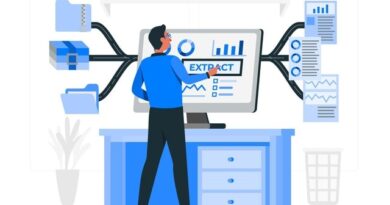The Best Ways to Manage Time and Attendance
There are much different time and attendance management solutions available today. These can include an automated system, an app, and a calendar. If you’re wondering which one is right for your business, read on to learn more about each option on the best time and attendance systems. Timesheets, leave requests, and other information can be managed using the right system, so you can spend less time on administrative tasks. Some systems can even integrate with other tools. A few examples are highlighted below.
Automated time and attendance system
There are many benefits to an automated time and attendance system. This type of software allows businesses to keep track of their employees’ time and can save businesses money every month. These programs can also help companies streamline their business processes by detecting employee time theft. An automated system can also improve employee morale and productivity. It’s easy to use. Employees will be more satisfied when they know their hours are being tracked. This means you can avoid overbilling your clients. All businesses can use automated time and attendance software. Whether your company has one employee or several, the system will help you keep track of time. A complete time and attendance software will highlight any errors so that you can make corrections before the end of the week.
Using a calendar
A calendar is a great way to plan out important events and tasks. But, it is also a great time-waster, as many people find it challenging to keep up with a large calendar. Make sure to separate work and personal tasks by using different categories. A calendar can be a great tool to help manage your time and attendance, especially if you have recurring events or multiple users in your company. However, if you use it for this purpose, set aside space for unimportant tasks. A planner also helps you prioritize projects and make sure they are finished on time. It is best to use an electronic calendar because you can easily add recurring events.
Using an app
If you consider implementing an app to manage time and attendance, you will be pleased to learn about the options available. Workly, for example, is an excellent option for companies looking to track employee time without punch cards. In addition, this app offers integrated biometric time clocks, which work by using fingerprints or other traits to verify employee time. The biometric time clock is ideal for high-tech or manufacturing companies. According to our review, Workly earns a 3.20 overall score and scores high marks for its time and attendance functionality. However, we discovered that the app could be prone to bugs and glitches.
There are also many benefits to using an app to manage time and attendance. For example, if your employees are constantly filling out timesheets and punch cards, it can be easy to clock in and out of work before they begin working. If this problem is a concern for you, consider purchasing an app that provides employees with GPS location stamps and geofencing. However, this feature can cost a bit more.
Using a system that integrates with other tools
Using a time and attendance system that connects with other tools makes it easy for employers to track employee attendance and identify any problems that arise in the workflow. These systems typically integrate with third-party calendars and can sync timesheets between the two. Some even have messaging features to keep employees up-to-date on essential topics. Here are some examples of time and attendance tools that integrate with other tools:
Most time and attendance systems come with scheduling features. These tools allow managers to create employee schedules using drag-and-drop functionality or a template. Many systems also let managers log accruals for paid and unpaid time off and give employees the option to request time off. The software can also be used by managers to approve or deny employee requests for leave. These features can help managers better manage employee schedules and payroll.
Using a system that uses geolocation
Using a system that uses geolocation for time and attendance management will allow you to monitor worker behavior and improve reporting capabilities. For example, you can receive notifications about employee location and when they submit a time card. This feature will also allow you to verify if employees are working in the correct location. This will give you a new level of insight into your staffing needs. The advantages of using this technology are many.
Geolocation for time and attendance management uses the GPS feature of employee devices to capture timestamps on time entries made online. Another location-based technology is geofencing. For example, you can set perimeters around a worksite and receive notifications when certain employees enter or exit the area. You can also automate time reporting to ensure you’re getting accurate and up-to-date data. You can then see which employees are the highest productivity contributors and which employees are taking too long.




